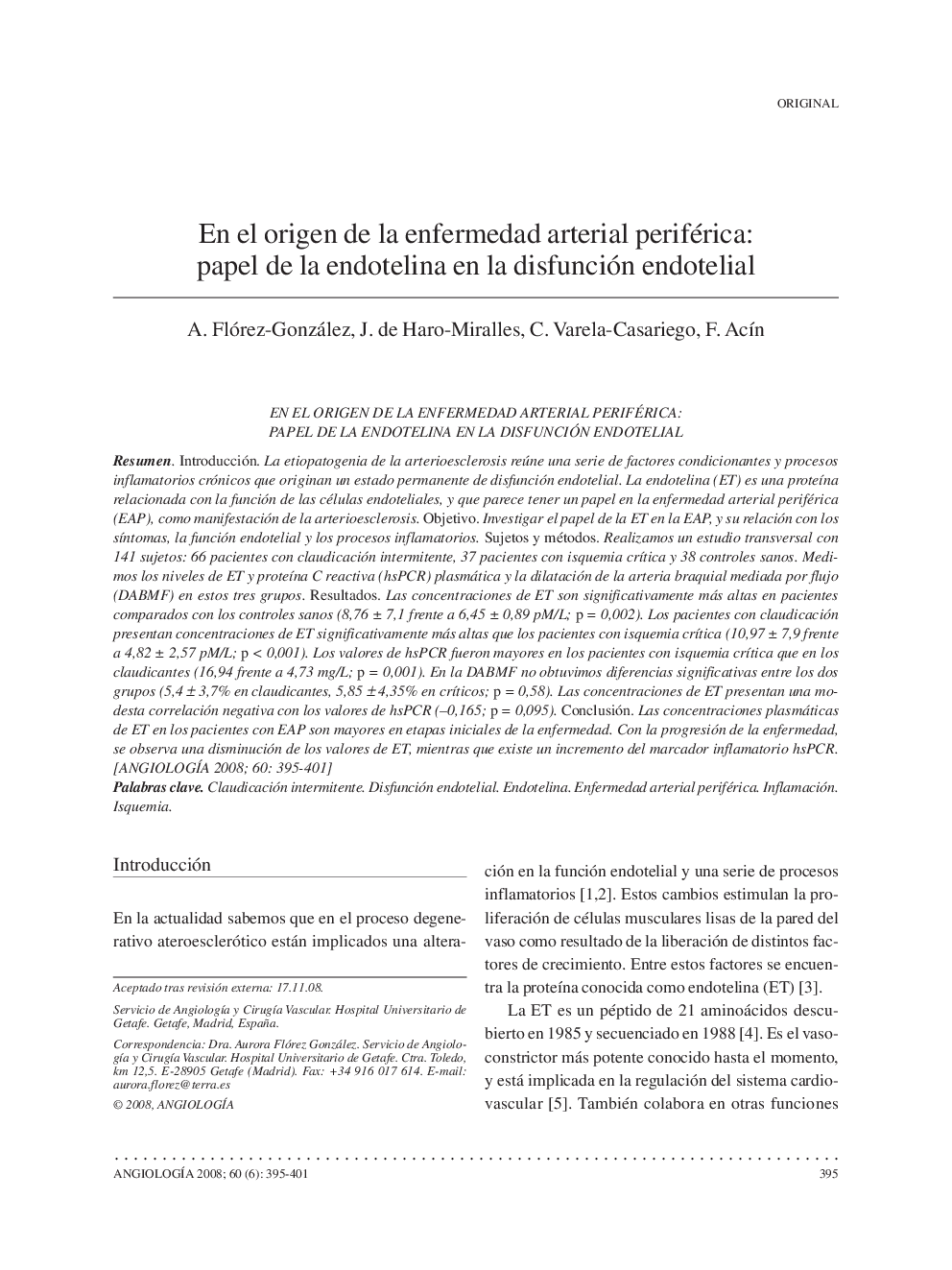| Article ID | Journal | Published Year | Pages | File Type |
|---|---|---|---|---|
| 2867921 | Angiología | 2008 | 7 Pages |
Abstract
Introduction. The aetiopathogenesis of arteriosclerosis includes a series of conditioning factors and chronic inflammatory processes that give rise to a permanent state of endothelial dysfunction. Endothelin (ET) is a protein that is involved in the functioning of endothelial cells and which seems to play a role in peripheral arterial disease (PAD), as a manifestation of arteriosclerosis. Aim. To examine the role of ET in PAD and its relation with the symptoms, endothelial functioning and inflammatory processes. Subjects and methods. We conducted a cross-sectional study with 141 subjects: 66 patients with intermittent claudication, 37 patients with critical ischaemia and 38 healthy controls. We measured the levels of ET and C-reactive protein (hsCRP) in plasma and the brachial artery flow-mediated dilation (BAFMD) in these three groups. Results. ET concentrations are significantly higher in patients than in healthy controls (8.76 ± 7.1 vs. 6.45 ± 0.89 pM/L; p = 0.002). Patients with claudication show significantly higher ET concentrations than patients with critical ischaemia (10.97 ± 7.9 vs. 4.82 ± 2.57 pM/L; p < 0.001). Patients with critical ischaemia had higher hsCRP values than those with claudication (16.94 vs. 4.73 mg/L; p = 0.001). No significant differences were observed in the BAFMD in the two groups (5.4 ± 3.7% in those with claudication, 5.85 ± 4.35%; p = 0.58). ET concentrations show a slight negative correlation with the hsCRP values (â 0.165; p = 0.095). Conclusions. Plasma concentrations of ET in patients with PAD are higher in the early stages of the disease. As the disease progresses, the ET values diminish while the inflammatory marker hsCRP increases. [ANGIOLOGIA 2008; 60: 395-401]
Keywords
Related Topics
Health Sciences
Medicine and Dentistry
Cardiology and Cardiovascular Medicine
Authors
A. Flórez-González, J. de Haro-Miralles, C. Varela-Casariego, F. AcÃn,
